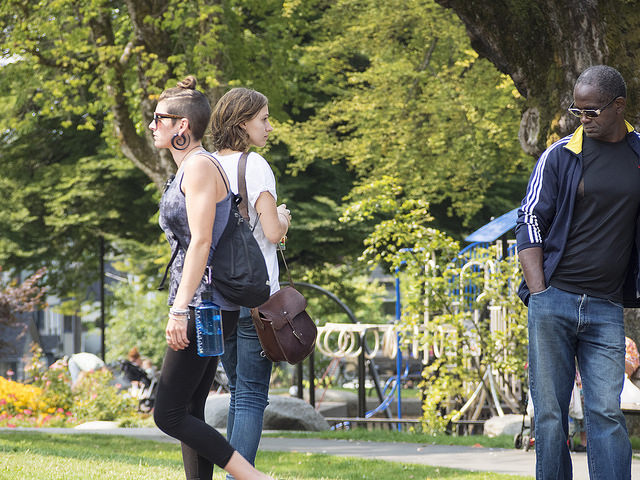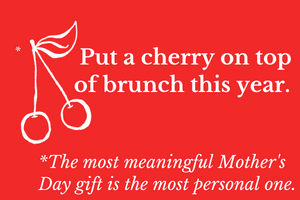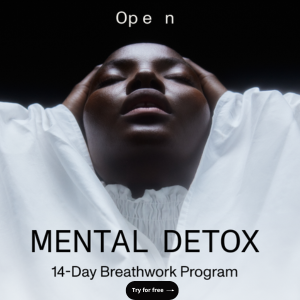
Preferences: we all have them for pretty much everything in our lives.
Food, clothes, weather, entertainment, you name it. But none seem to be more challenging to work with than the ones we have for people, particularly as they relate to romance and physical attraction.
Lately, as I find myself back in the dating world, I have been wondering a lot about the whole physical preference thing and how it has controlled my experiences with men.
I never really thought of myself as having a certain type, but I have certainly been quite aware of what has typically not been my type.
This list would include: blondes, red heads, too tall, too short, too fat, too thin, too muscular, too hairy, too unhairy, too young, too old, too plain, too good looking, too feminine, too, too, too…
Uh, ok, this is embarrassing.
I consider myself to be an open minded and fairly non-judgmental person. So how the hell does all that fit in? Answer: it doesn’t.
But nonetheless, my preferences exist as they exist for all of us. So where do they come from? Is it nature or nurture? Maturity or immaturity? What beliefs do I hold that might be affecting them? Do I have blocks or barriers that keep me from rising above my default settings? And is it realistic to expect that I might be able to shift them?
I’ve been (sometimes painfully so) on both sides of the “I’m just not that attracted to you” equation; the rejecter and the rejectee. Neither side is easy, especially if we really like the person. And what’s fascinating is that even when we do really, really like the person, maybe even love them, we still sometimes can’t seem to shake that preference sh*t from our shoes. It’s powerful and it’s controlling as hell.
Preferences, and the rules of attraction, are formed by a pretty long list of criteria. It’s one that scientists are unclear about in terms of their hierarchy. Biology, culture, our upbringing and social conditioning all play a role to some extent in defining whom we find attractive.
There are also psychodynamic theories such as Freud’s studies on transference and Harville Hendrix’s Imago therapy that state how we are attracted to our childhood caretakers (typically the opposite sex parent) in order to reconnect with positive traits and heal the negative ones. We might share similar unconscious wounds and connect through that resonance. Or perhaps in the physical sense we may be drawn to people that resemble a parent and therefore subconsciously ourselves. Similar genetics have been proven to factor highly into our attraction equation. For example:
Have you ever noticed how many seemingly happy couples look a lot like each other?
One thing that most researchers seem to agree upon is that we really aren’t too sure about whether we are born with a set, predetermined “preference gene”.
When we meet someone, we instantly go into data collection mode, making split second mental notes that speak to our heart and mind. In a flash, we take in all the critical details that define our attraction level. Facial features and their symmetry, body type, posture, tone of voice, smell, energy/aura, a laugh, a smile and so much more goes into that split second decision of yes, maybe or hell no!
Most relationships begin from this type of “base level” attraction and, if the pull is intense, it can be very exciting. However, while we cannot diminish the fun and importance of this magnetism, we also need to recognize its limitations.
When the attraction is intense, we are usually blind to any reliable assessment around compatibility and character. The biochemical high tends to steer the ship and can often take us into very choppy waters.
This high is short lived and, in the grand scheme of lasting love, has little do with our longterm compatibility with someone. Many will go from lover to lover seeking that “fix”, but this is not love, not in any spiritual sense anyway; this is simply temporary shifts in our body chemistry.
Our attraction level becomes a more substantial, meaningful and exponential one when we build from a spark rather than an inferno.
If we seek a successful longterm relationship, then research has shown that a moderate attraction is more likely to produce that result. Lasting love depends at least as much on behavior as biology, and most relationship experts would say even more so on behavior.
With the “maybe” guy or gal, we act more like ourselves, we get to know that person more authentically and we can connect on a deeper more spiritual level. We stand a much greater chance for healthy partnership with this person.
Our personal and individualized recipe for attraction can develop yet another interesting ingredient. Based on a prior relationship, we consciously (or subconsciously) seek out a new partner who will make us feel the same or similar things we felt from someone else. We come to associate feelings of love, lust, friendship, happiness, safety, trust, respect and more to certain traits and characteristics that an old flame or a lost love possessed.
Some will spend years searching for this doppelganger even while consciously aware of the senseless comparison game they are playing. In the pathological extreme, this may speak to a serious case of limerence (article forthcoming).
Sadly, even if the “stand in” is found, this is an ill-fated relationship. We are not truly seeing the new person for who he/she is; the attraction is based on an entirely different person.
If we keep searching and waiting for a partner to fill a void left by someone else, then we are not only chasing an illusion, we are setting ourselves up for a seriously unhealthy and codependent dynamic.
And finally there is that batshit crazy little thing called the ego to contend with. In my firsthand experience, it is often the ego making the executive decisions around our attraction choices. The ego (in the Eastern sense), desires to keep fear alive and well in us and will convince us of many things far removed from love. In this regard, we are or aren’t attracted to someone because of how that person makes us feel about ourselves.
When a person triggers any sense of our “not enoughness” the ego steps up and either says uh-uh, no way or, come on in and party.
Our almighty ego will fight to the death to hold onto an identity we want to believe about ourselves, and usually we are blind to the objectification we’ve created through these ego-based biases.
Shifting this stuff takes an awful lot of introspection, honesty, courage, maturity and desire to evolve. It’s not the work of the casual seeker.
So can we change who we’re physically attracted to? Yes and no. Some base level preferences may never shift, no matter how much we grow. But as our spiritual world evolves, as we mature and our awareness expands, we tend to give greater meaning to things that previously didn’t matter as much. As our perceptions change, we learn to see and feel things differently and our preferences will be affected by that.
Ultimately, it may be that it’s not so much the preference itself that shifts, but rather the attachment we have to the preference. As our self worth and awareness increases, we may find ourselves open to more possibilities because our priorities will have shifted.
So now I’m looking for my “maybe guy”, because the slow build from a spark makes so much sense to me. It’s the new model for my selection process, which also includes knowing and honoring my standards and focusing more on the feelings of joy and happiness that I wish to feel in his presence. These are my new preferences, shifting consciously and deliberately along with my personal evolution.
~
Author: Debra Warshaw
Editor: Caroline Beaton
Image: Flickr






Read 0 comments and reply